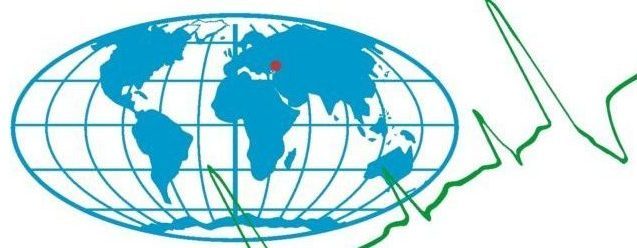Yu.V. Doronina, A.M. Skatkov
Sevastopol State University, RF, Sevastopol, Universitetskaya St., 33
E-mail: YVDoronina@sevsu.ru
DOI: 10.33075/2220-5861-2023-4-103-111
UDC 519.8
EDN: https://elibrary.ru/speyxa
Abstract:
The article focuses on solving the problem of approximate estimation of probabilistic characteristics of object detection results during remote sensing of the Earth. In practice, it is often necessary to know about the sufficiency of statistical data that will allow you to control the equipment of the spacecraft, launch strategies with specified confidence probabilities. It is assumed that the search object is located on a plane bounded by a circle with some radius r. Based on the Monte Carlo method, a random point simulating the beam of the spacecraft was chosen. The random number of ray hits in the circle relative to the number of all tests is an approximate estimate of the probability of hitting the intended search area. The coordinates of the point are random, distributed according to a normal law with mathematical expectation M = 0. It is shown that the fastest decrease in probability occurs at the maximum angle: after the first conditional unit of time, the probability decreases approximately three times, and when the speed decreases twice, the probability of detection increases twice. The simulation of these search situations was carried out on the basis of the developed software, which, in the presence of a classification of typical cases, made it possible to obtain estimates of probability and standard deviation depending on time at different rates of dispersion growth with tilt angles. The results of the study allowed increasing the degree of validity of the decisions made to control the parameters of the spacecraft.
Keywords: remote sensing of the Earth, probability of detection, orbital satellite, spacecraft, dispersion.
REFERENCES
- Kochergin A.M., Kuznecov A.E., Pobaruyev V.I., and Shokol A.S. Tekhnologiya vizual’nogo geodezicheskogo orientirovaniya kosmicheskih snimkov zemnoj poverhnosti (Technology of visual geodetic orientation of satellite images of the Earth’s surface). Tsifrovaya obrabotka signalov, 2012, No. 3, pp. 45–48.
- Novakovskij B.A. and Permyakov R.V. Kompleksnoe geoinformacionno-fotogrammetricheskoe modelirovanie rel’efa: uchebnoe posobie (Complex geoinformation and photogrammetric modeling of relief: textbook). Moscow: “Izd-vo MIIGAiK”, 2019, 175 p.
- Starikov I.P., Kopylova N.S., and Sherstyuk E.V. Matematicheskaya model’ edinogo differencial’no-lokal’nogo metoda otobrazheniya zemnoj poverhnosti (Mathematical model of a single differential-local method of mapping the Earth’s surface). Informaciya i kosmos, 2017, No. 1, pp. 168–173.
- Makunina Ya.S., Dolmatov S.N., and Borisevich A.N. Perspektivy primeneniya tekhnologii DZZ v kachestve instrumenta rannego obnaruzheniya lesnyh pozharov (Prospects for the use of remote sensing technology as an early detection tool for forest fires), Aktual’nye problemy obespecheniya pozharnoj bezopasnosti i zashchity ot chrezvychajnyh situacij (Actual Problems of Fire Safety and Emergency Protection: Materials of the IV All-Russian Scientific and Practical Conference): materialy IV Vserossijskoj nauchno-prakticheskoj konferencii. 21 april 2023, Zheleznogorsk, 2023, pp. 174–177.
- Solov’yov M.D. Perspektivnye proekcii s mnogokratnymi izobrazheniyami (perspektivami) (Perspective projections with multiple images (perspectives)). Trudy CNIIGAiK,1959, Vol. 31, pp. 137–165.
- Andronov V.G. Matematicheskie modeli, metody i metodiki avtonomnoj fotogrammet-richeskoj obrabotki kosmicheskih skanernyh snimkov: special’nost: Diss doktora tekhn. nauk (Mathematical models, methods and techniques of autonomous photogrammetric processing of space scanner images. Doct. techn. sci. thesis), Kursk: 2016, 328 p.
- Komissarov A.V. Teoriya i tekhnologiya lazernogo skanirovaniya dlya prostranstvennogo modelirovaniya territorij: Dis. doktora tekhn. nauk (Theory and technology of laser scanning for spatial modeling of territories. Doct. techn. sci. thesis), Novosibirsk: 2016, 278 p.
- Hope C. and Chuaqui M. Manual total station monitoring. Geotechnical News, 2008, No. 26, Iss. 3, pp. 28–30.
- Wang H. Application of Leica TS30 ultra-precision total station in de-formation monitoring. Journal of Liaoning, Technical University (Natural Science Edition), 2015, No. 34, Iss. 3, pp. 401–404.
- Bond J. Using GPS for augmenting deformation monitoring systems in open pit mines – Problems and solutions. Geomatica, 2005, No. 59, Iss. 1, pp. 73–82.
- Zhao Q.A, Liu Z., Qin B., Wei Z., and Fang S. A snowment runoff forecasting model coupling WRF and DHSVM. Hydrology and Earth Systems sciences (HESS), 2009, Vol. 13 (10), pp. 1897–1906.
- Chibunichev A.G., Kurkov V.M., Govorov A.V., Smirnov A.V., and Mihalin V.A. Issledovanie tochnosti fototriangulyacii s ispol’zovaniem razlichnyh metodov laboratornoj i polevoj kalibrovki (Investigation of the accuracy of phototriangulation using various methods of laboratory and field calibration). Izv. vuzov Geodeziya i aerofotos”emka, 2016, No. 2, pp. 42–47.
- Mendoza M., Tsvetkov P.V., and Lewis M. Multi-modal global surveillance methodology for predictive and on-demand characterization of localized processes using cube satellite platforms and deep learning techniques. In Remote Sensing Applications: Society and Environment, 2021, Vol. 22, 100518, DOI: 10.1016/j.rsase.2021.100518.
- Guyot A., Lennon M., and Hubert-Moy L. Objective comparison of relief visualization techniques with deep CNN for archaeology. Journal of Archaeological Science: Reports, 2021, Vol. 38, 103027, DOI: 10.1016/j.jasrep.2021.103027
- Mihajlov I.R., Abramov N.A., and Dolmatov S.N. Metody distancionnogo zon-dirovaniya zemli v lesnoj promyshlennosti (Methods of remote sensing of the earth in the forest industry). Sovremennye innovacii, sistemy i tekhnologii, 2023, Vol. 3 (3), pp. 0301–0310, https://doi.org/10.47813/2782-2818-2023-3-3-0301-0310
- Vazhenin V.G., Dyad’kov N.A., Bokov A.S., Sorokin A.K., Markov YU.V., Lesnaya L.L. Polunaturnoe modelirovanie bortovyh radiolokacionnyh sistem, rabotayushchih po zemnoj poverhnosti (Semi-natural modeling of airborne radar systems operating on the Earth’s surface). Ekaterinburg: Izd-vo Ural. un-ta, 2015, 208 p.
- Mihajlov G.A. Algoritm “maksimal’nogo secheniya” v metode Monte-Karlo (The “maximum cross-section” algorithm in the Monte Carlo method). Doklady Akademii nauk, 2009, Vol.428, No.2, pp. 163–165.
![]()
